Living Inside Is Beautiful: Senior Art Exhibition 2012
Senior Thesis Exhibition 2012
April 26 – May 12, 2012
Lenzner Family Art Gallery, Atherton Hall, Barbara Hinshaw Memorial Gallery, Grove House
Robbie Acklen, Elizabeth Bartolini, André Baum, James Cathey, Brandon Fernandes, Zachary London, Dean Pospisil, Leah Quayle, Reid Ulrich
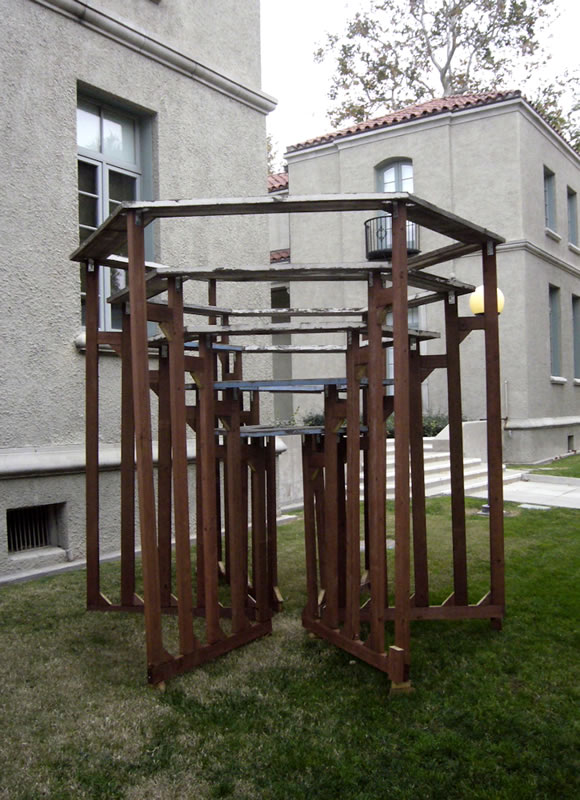
Robert Acklen
Re-visiting a space of adolescence—Beneath the Bleachers (2012)—examines the effect of my culturally specific upbringing–mid-western, white American, suburban—through an installation that is both psychoanalytical and environmentally impactful. Distortion is inevitable when recalling distant memories. When I do re-call moments from my adolescence, they manifest into an incomplete picture. The dream-like objects I present function as analogies for distorted interpretations recalled from my youth. In my work, I attempt to heighten the viewer’s awareness of their own positionality as participants in our culture’s contemporary scopophilic state. By presenting the standard/traditional object of the bleacher—now made dis-functional and inaccessible—I remind us of the borders of spectatorship that is always functioning, perhaps unconsciously. [clear]
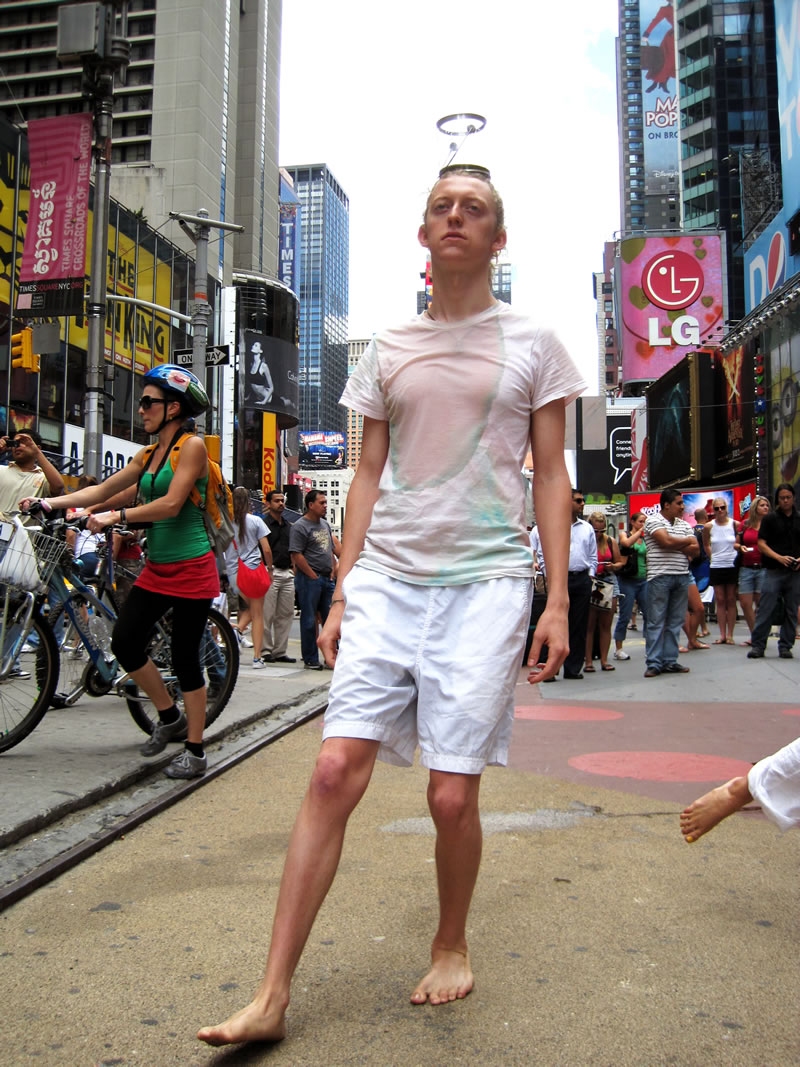
André Baum
A curiosity of the unknown compels me to create. I strive to reveal hidden luminosity in the intersection of the logical and physical with the irrational and extrasensory. Improvisation is essential to my process, which is explored with music, film, drawing, and writing. These media function as representations for my subconscious urges and unconscious revelations unraveling into the impersonally sacred.
My work is inspired by synchronistic moments: intersections of experiences between others and myself that should not be mistaken as mere coincidence. These collisions often occur when creating energetically and mindfully. For me, they exemplify successful communion with the nature that governs me. These experiences give way to my use of performance to unite spiritual practices and multimedia.
It is intention that distinguishes purposeful performance from everyday life. But the two often blend. T.S. Elliot wrote, “There will be time/ to prepare a face to meet the faces that you meet.” In my various roles, I aim for congruent authenticity. And what is an authentic performance if not first aligned with an authentic spirit? In lieu of an answer, I surrender to the ritual of synchronistic consciousness, of that which connects not to my personhood but rather to what I do to honor its existence. [clear]
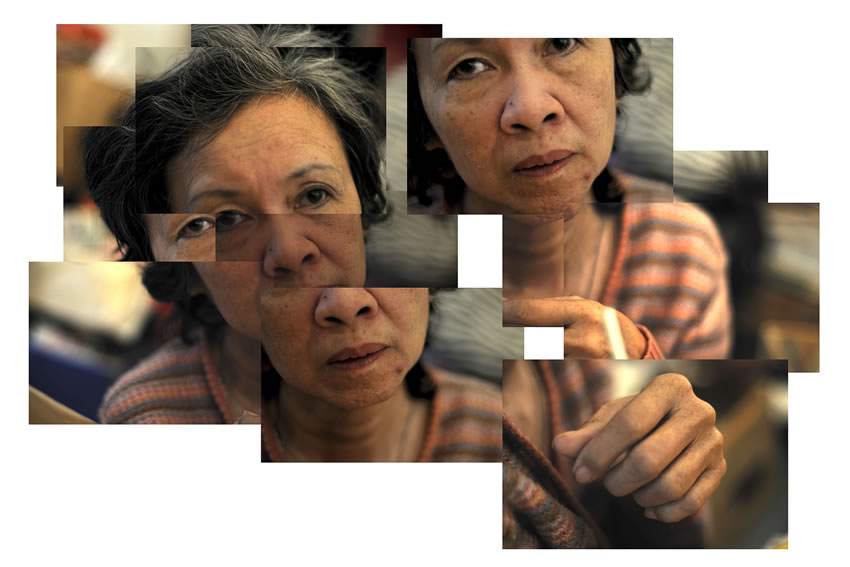
Elizabeth Bartolini
As human beings, we are all interconnected in some way shape or form, and I explore this interconnectivity in my artwork. Each piece I make attempts to answer the question: “How can human beings find themselves in each other?” Using photography and sculpture, I seek to interrogate this question—not to come to a single conclusion, but to examine the many possibilities that it throws up. I reference David Hockney’s collaging style to identify parts that make up the whole, reminding myself of the importance of each fragment. Through these photo collages, I see my subjects in a new light and find reflections between each person. This exploration has been focused on my family, and in particular my mom. I am interested in exploring my connection to her—beyond the obvious (though not insignificant) life-giving relationship. She has been diagnosed with Progressive Supranuclear Palsy, a rare degenerative brain disorder that slowly takes away one’s motor skills. As her physical being slowly deteriorates, her awareness and aliveness are still intact. Through my practice, I get to discover my mother beyond the disease, beyond her body and create myself in the process. While this exploration is not over, I know that I am proud to be a daughter of woman who loves unconditionally. [clear]
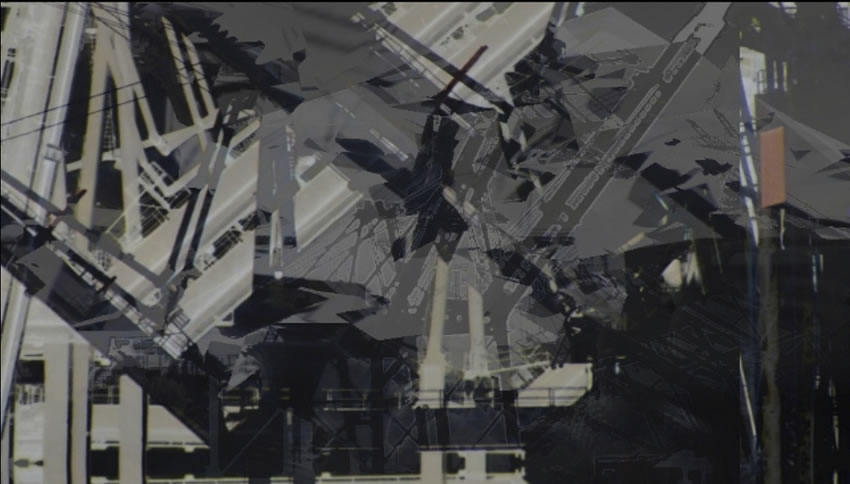
James Cathey
My artwork is inspired by my experiences traveling across the United States and more recently, the Middle East. I have always been fascinated by the process of decay and growth on the border between the natural environment and human society. The patterns and textures that result from these conflicting realms of the organic and the synthetic form the basis of my inspiration.
Utilizing film and photography, I document both the purity of natural objects and places, as well as the waste and damage resulting from excessive production and consumption of material goods. The soundscapes that I compose are important in establishing immersive spaces that complement the projected images. Field recordings and synthesizers are the tools used to create an ambient tapestry that embodies the collision of the organic and synthetic.
I use generative software to apply randomized editing and sequencing to forcefully combine and fragment both the audio and video media. The result is a space that metaphorically embraces the timeless beauty of nature while simultaneously introducing the caustic results of rampant industrialization. By applying generative methods to my work, a detachment from linear space and relation is created. The original media is transformed into a cacophony of fracturing elements that coalesce into a unified theme of uncontrollable destruction. [clear]
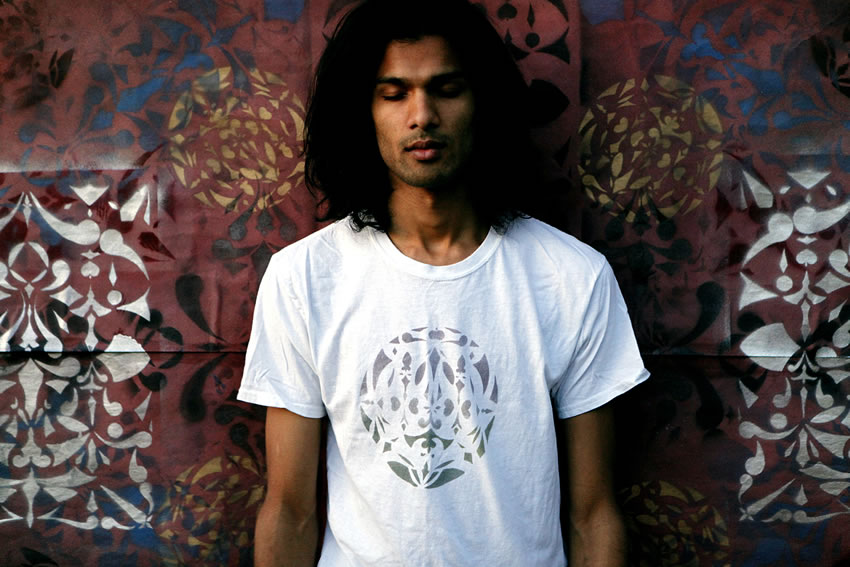
Brandon Fernandez
When I create an artwork, I deliberately use inexpensive materials such as glue-guns, dollar spray-cans, Christmas lights, brown canvas paper and other items that are freely available on the college campus setting in order to bring attention to their accessibility and economic value. Influenced by graffiti writing styles and the “Street Art” scenes in Los Angeles as well as other parts of the world, my artwork draws from urban art practices and incorporates the use of stencils, calligraphy-writing, LED drawing, and other sculptural forms. In my most recent drawings I have become interested in creating complex forms and shapes referencing different angles. I consider these drawings complete when they show a considerable amount of repetition, balance, depth and symmetry. Similar to the role of a DJ whose practice consists of sampling bits and pieces to construct a collective whole, my drawings are only complete once they have integrated the geometric shapes and angels into the complex designs which keeps the viewers eye traveling. [clear]

Zachary London
On The Bald Prophets
“On a smog-encrusted morning late last August, the otherwise innocuous Mount Baldy was abruptly transformed into the most eminent archeological site in the Western Hemisphere. Upon the incidental discovery of a ceramic protrusion, my team and I conducted a routine dig, which resulted in the most significant excavation of my career. Embedded just beneath the sprawl of a few Yuccas lay an archaic time capsule—a cryptic codex of exceedingly peculiar artifacts that had been deliberately embedded in the soil. The most jarring and prophetic of these specimens was a small shield, emblazoned with the ubiquitous corporate logos and industrial scenery of our present era. I was quick to deem the findings a hoax, however, rehydroxylation tests revealed that the object was 800 years old.
Of the progenitor’s culture we know very little. Their cosmology is hardly revealed through the obfuscated objects they bestowed to us. My credentials as an archeologist compels me to speculate and prescribe narrative to these inscrutable peoples, to elucidate their way of life so that we may confidently add another patch to the elaborate quilt of human history. But I remain mystified. Lo, we have dug up the whole mountain, and they have left us nothing more.” [clear]
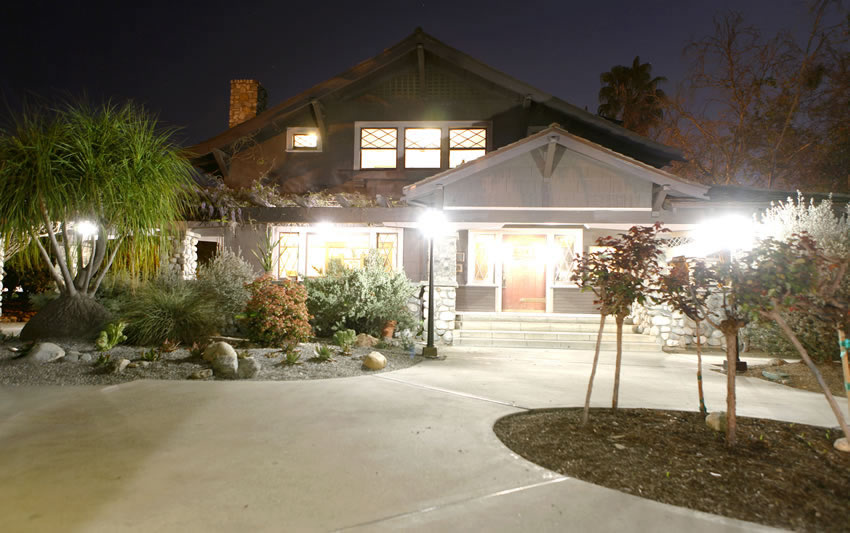
Leah Quayle
Expanding the Grove House
My work attempts to expand the unique position that the Grove House occupies socially, historically and physically within the Pitzer community and the surrounding area by modifying the viewer’s relationship to the space. I will create a forum for new connections to be forged within the context of the Grove House, as an experiment in relational aesthetics. I will be collaborating with Grove House community members and the caretaker, Julie McAleer, to present a collection of relational pieces that include a core website, an exhibit of the space, and a series of workshops. The website, will allow viewers to explore a library of information about the house’s history, function and current activities. I will also alter the physical space of the house by restoring traditional furniture and bringing in new objects for the house’s activities.
My guides and workshops will provide information on a variety of skills useful within the Grove House, from how to cook a recipe to how to arrange an internship at a neighboring farm. The overall purpose of these workshops and guides is to enable participants to take action and care for the space. This project encourages viewers to expand of their perceptions of how this collective space is experienced and how it can be altered by each individual. [clear]
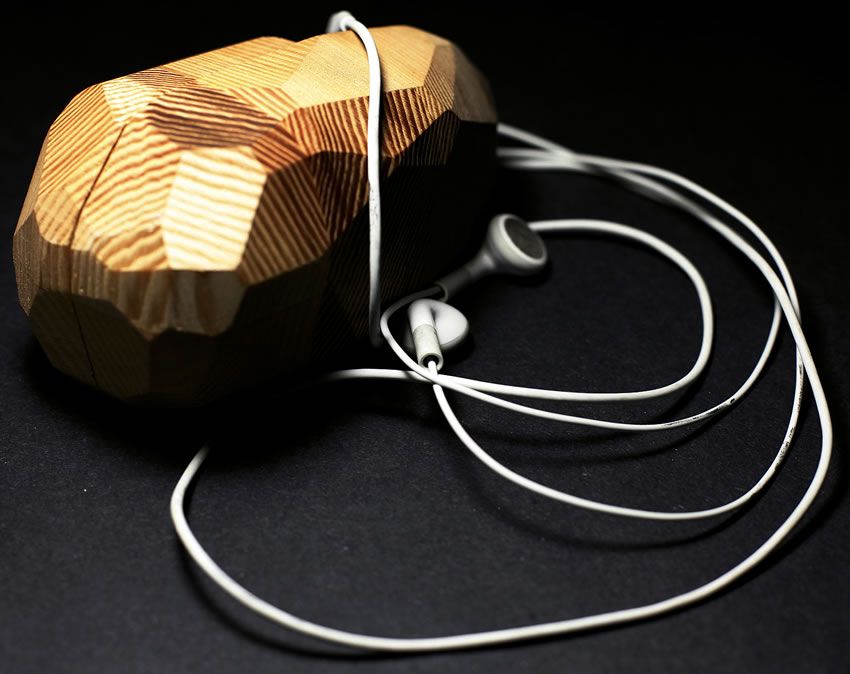
Dean Pospisil
I know of no better tactic than the illustration of exciting principles by well-chosen particulars
—Stephen Jay Gould
One of the most basic features of the nervous system is analogy, the ability to form relationships between different sets of information. I believe it is our unusually high propensity to analogy that has driven some of the most valuable developments in human culture. Language came from the translation of images into sounds, and the translation of sound back into images resulted in written language. Thus by translating one set of information into a radically different domain, the way we share and form meaning can be deepened. In my science thesis I argue that analogy has derived from the evolutionary pressure to integrate information across the basic senses. By fusing sculpture and electronics, I seek to explore analogy at the most basic level through the creation of new relationships between our senses. By directly re-organizing the viewers modes of hearing, seeing and touching, these artworks will prompt the viewer to experience the potentialities of the radical reconstruction of our perceptions. [clear]
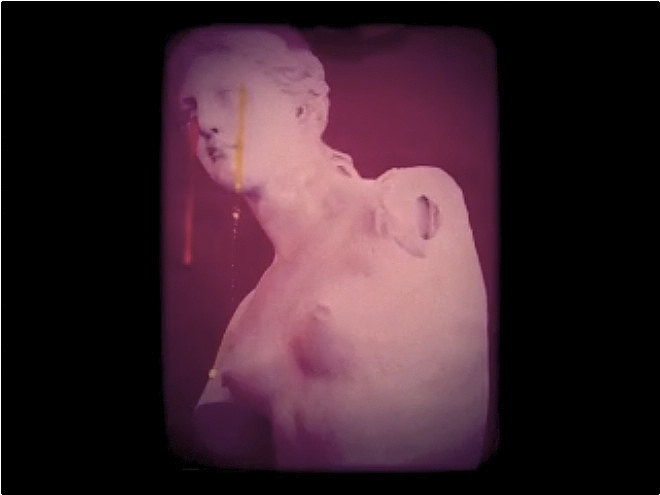
Reid Ulrich
When we bury our dead, we preserve them in dreams and memories, mirages and choruses. We enter as others exit and so we join stone with soil and wait for grass to grow. In every life led, there is revolution. As we build our monuments, we fail to preserve their victory, their transformations. Instead, we profess to the ear of the future the persistent sensations of existence. When we speak to the living, we speak about suffering, about renewal, about protest. And then we meander.
In every word spoken and image shared a defeated revolution lives. Here and now, I am attempting and failing to revolt against a number of effects. I am attempting to speak about things that can’t be said with a voice that can’t be heard. I am demanding that we share the gift of loss and the life of death.
 WORLD IS WATCHING – MANIFESTO
WORLD IS WATCHING – MANIFESTO